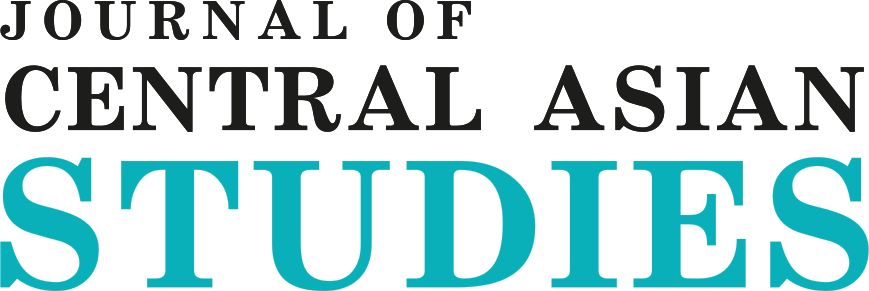Navigating Diplomatic Horizons: Mapping Italy-Kazakhstan Relations After Tokayev’s Visit in 2024
DOI:
https://doi.org/10.52536/3006-807X.2025-1.001Keywords:
bilateral relations, diplomacy, Italy, Kazakhstan, TokayevAbstract
The visit of Kazakh President Kassym-Jomart Tokayev to Italy in January 2024 represents a pivotal moment in shaping the bilateral cooperation between Kazakhstan and Italy. Discussions during the visit emphasized the mutual desire to deepen economic integration, expand trade and investment ties, and collaborate in diverse sectors such as energy, tourism, and infrastructure. Moreover, cultural exchanges, scientific cooperation, and reciprocal understanding of security issues underscored the diverse array of shared interests between the two countries. This article critically examines the new trajectory of Kazakh-Italian relations following President Tokayev's official trip. Drawing upon official documents and authoritative sources, the goal is to explore the multifaceted implications and opportunities arising from this diplomatic engagement. Methodologically, this study provides a qualitative assessment based on two intersected approaches: the content analysis of official documents and press releases related to the event and the discourse analysis of the transcript of an interview given by the Italian Ambassador in Kazakhstan Marco Alberti to “The Astana Times” on January 29th. Through a structured examination of the outcomes of this diplomatic endeavor, this article provides valuable insights into potential paths of development and cooperation between Kazakhstan and Italy, amidst the changing landscape of global order and economic conditions.
References
Akorda – Official website of the President of the Republic of Kazakhstan. (2024, January 18). The President of Kazakhstan hold talks with the President of the Council of Ministers of Italy Giorgia Meloni. Retrieved May 27, 2024, from https://www.akorda.kz/en/123-1802340
Alberti, M. (2021). Open Diplomacy: Diplomazia economica aumentata al tempo del Covid-19. Rubettino Editore.
Ambrosio, T. (2023). Between Threat, Alliance, and Multivectorism: Kazakh-Russian Relations in the Wake of the Russo-Ukrainian War. In: Caron, JF. (eds.) A Revolt in the Steppe. The Steppe and Beyond: Studies on Central Asia. Palgrave Macmillan, Singapore. DOI: https://doi.org/10.1007/978-981-99-0783-0_3.
Andreatta, F. (2008). Italian Foreign Policy: Domestic Politics, International Requirements and the European Dimension. Journal of European Integration, 30 (1), 169 - 181. DOI: https://doi.org/10.1080/07036330801959564
ANSA. (2023). Kazakistan: aperto l’Istituto Italiano di Cultura di Almaty. Retrieved November 30, 2023, from https://www.ansa.it
Arynov, Z. (2022). Is Kazakhstan’s Multi-Vector Foreign Policy Threatened? Horizons: Journal of International Relations and Sustainable Development, 21, 192-197. Retrieved May 27, 2024, from https://www.jstor.org/stable/48686708
Azmukhanova, A. and Aitmagambetov, D. (2020). Kazakhstan-European Cultural Contacts. KazNU Journal of History 97 (2): 109-120. DOI: 10.26577/JH.2020.v97.i2.12.
vom Brocke, J., Simmons, A., Riemer, K., Niehaves, B., Plattfaut, R. and Cleven, A. (2015). Standing on the Shoulders of Giants: Challenges and Recommendations of Literature Search in Information Systems Research. Communications of the Association of Information Systems 37 (1): 9. DOI: 10.17705/1CAIS.03709.
Carbone, M. (2007). The domestic foundations of Italy’s foreign and development policies. West European Politics, 30(4), 903–923. DOI: https://doi.org/10.1080/01402380701500371
Castellini, G. (2021) Soft power e l’arte della diplomazia culturale. Milano: Le Lettere, 1-150.
Chelotti, N. (2010). Italy seen through British eyes: a European middle power? Modern Italy, 15(3), 307-322. DOI: 10.1080/13532944.2010.490340
Felsen, B. (2018). Italian foreign policy under the Gentiloni government: do the ‘three circles’ hold in 2017? Contemporary Italian Politics, 10(4), 363 - 376. DOI: https://doi.org/10.1080/23248823.2018.1544352
Frigerio, A. (2023). Kazakhstan in the Multiverse of the 21st Century: Six Dilemmas to Draw Its Future Paths. KazNU Journal of Philosophy, Culture, and Political Science 83 (1): 92-100. DOI: https://doi.org/10.26577/jpcp.2023.v.83.i1.9.
Joint statement by the President of the Republic of Kazakhstan and the President of the Council of Ministers of the Italian Republic. (2024, January 19). Akorda. Retrieved May 27, 2024, from https://www.akorda.kz/en/123-1901335
Jordaan, E. (2003). The concept of a middle power in international relations: distinguishing between emerging and traditional middle powers. Politikon, 30(1), 165–181. DOI: https://doi.org/10.1080/0258934032000147282
Kazinform. (2024a, January 11). Italian-Kazakh Cultural Center for Creative Industry to be opened in Kazakhstan. Retrieved May 27, 2024, from https://en.inform.kz/news/italian-kazakh-cultural-center-for-creative-industry-to-be-opened-in-kazakhstan-358d60/
Kazinform. (2024b, January 17). All roads lead to Rome: Why Tokayev is heading to Italy. Retrieved May 27, 2024, from https://en.inform.kz/news/all-roads-lead-to-rome-why-tokayev-is-heading-to-italy-1eff2b/
Kenzhalina, G., Kussainova, A., Aitmagambetova, D., & Bolysbekova, M. (2020). The Role of Cultural Diplomacy in Relations Between Kazakhstan and Italy. Public Administration and Civil Service, 74(3), 57-67. DOI: https://doi.org/10.52123/1994-2370-2020-74-3-57-66
Kuzembayeva, A.B. & Dayardi, S.B. (2016). Culture as a factor promoting the positive image of a country: the case of Italy. Retrieved from https://articlekz.com/en/article/16307
Laruelle, M., Royce, D. and Beyssembayev, S. (2019). Untangling the puzzle of “Russia’s influence” in Kazakhstan. Eurasian Geography and Economics 60 (2): 211-243. DOI: https://doi.org/10.1080/15387216.2019.1645033.
Nyshanbayev, N., Tarman, B., Tolen, Z., Samay, A. and Agybay, Z. (2024). The Republic of Kazakhstan’s multi-vector foreign policy: Re-evaluation under President Tokayev. Kasetsart Journal of Social Sciences 45 (3): 915-924. Available at: https://so04.tci-thaijo.org/index.php/kjss/article/view/274816. Last access on 27/05/2024.
Nurgaliyeva, L. (2015). The Role of Italy in the Development of Energy Cooperation between Kazakhstan and the EU. Review of European and Russian Affairs 9 (1): 1-21.
Nursultanova, L.N., Bokayeva, A.K., and Kasymova, A.K. (2024). Trends and Prospects of Trade and Economic Cooperation between Kazakhstan and Italy. Bulletin SKU named M. Kozybaeva 61 (1): 52-60. DOI: 10.54596/2958-0048-2024-1-52-60.
O Kontseptsii vneshnei politiki Respubliki Kazakhstan na 2020–2030 gody [On the Concept of Foreign Policy of the Republic of Kazakhstan for 2020–2030]. (2020). Akorda. Retrieved May 27, 2024, from https://www.akorda.kz/ru/legal_acts/decrees/o-koncepcii-vneshnei-politiki-respubliki-kazahstan-na-2020-2030-gody
Satubaldina, A. (2024, January 3). No Alternative: Kazakhstan Continues Multi-Vector Foreign Policy. The Astana Times, Retrieved May 27, 2024, from https://astanatimes.com/2024/01/no-alternative-kazakhstan-continues-multi-vector-foreign-policy/
Siddi, M. (2018). Italy’s ‘Middle Power’ Approach to Russia. The International Spectator, 54(2), 123–138. DOI: https://doi.org/10.1080/03932729.2018.1519765
The Astana Times. (2024). Italian Ambassador on Tokayev’s Visit: 18 agreements, 18 reasons to work harder. Interview. Retrieved May 27, 2024, from https://www.youtube.com/watch?v=W18SLW6nUmE&t=1s
Tulibayeva, Z.M., and Serikbayeva, A.T. (2013) Kazakhstan-Italian Economic Collaboration: History, Challenges and Prospects. World Applied Science Journal 28 (6): 876-883.
Vanderhil, R., Joireman, S. F. and Tulepbayeva, R. (2020). Between the bear and the dragon: multivectorism in Kazakhstan as a model strategy for secondary powers. International Affairs 96 (4): 975–993. DOI: https://doi.org/10.1093/ia/iiaa061.
Yun, C.M. (2010). The policy of the “small powers” of the European Union in Central Asia [Politika «nevelikix derzhav» Evropejskogo Soyuza v Central`noj Azii]. Bulletin of Tomsk State University, 332, 94-97.
Downloads
Published
Issue
Section
License
Copyright (c) 2025 Frigerio A., Imangaliyeva L.

This work is licensed under a Creative Commons Attribution 4.0 International License.











 Open content is licensed under the CC-BY
Open content is licensed under the CC-BY 


